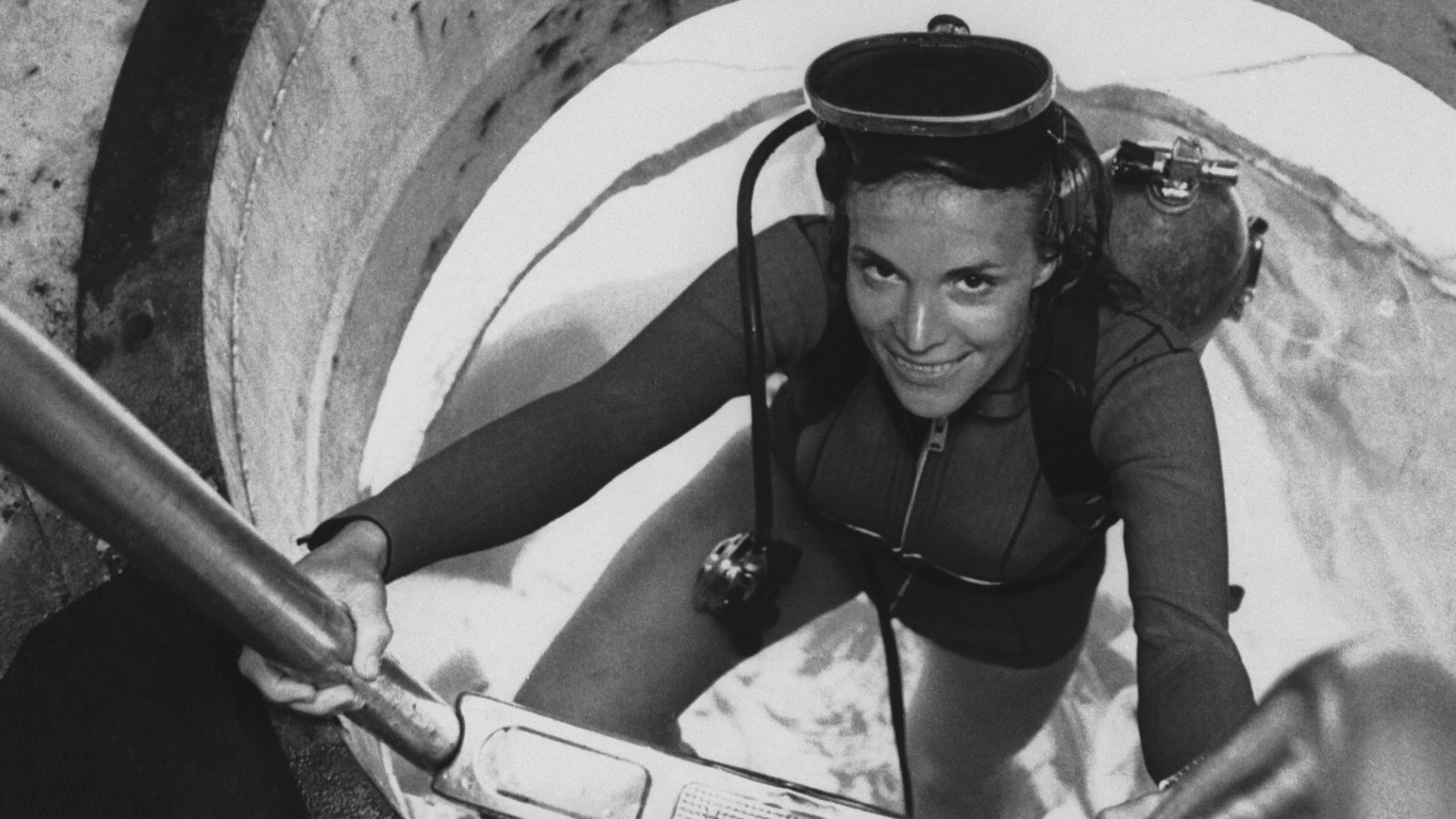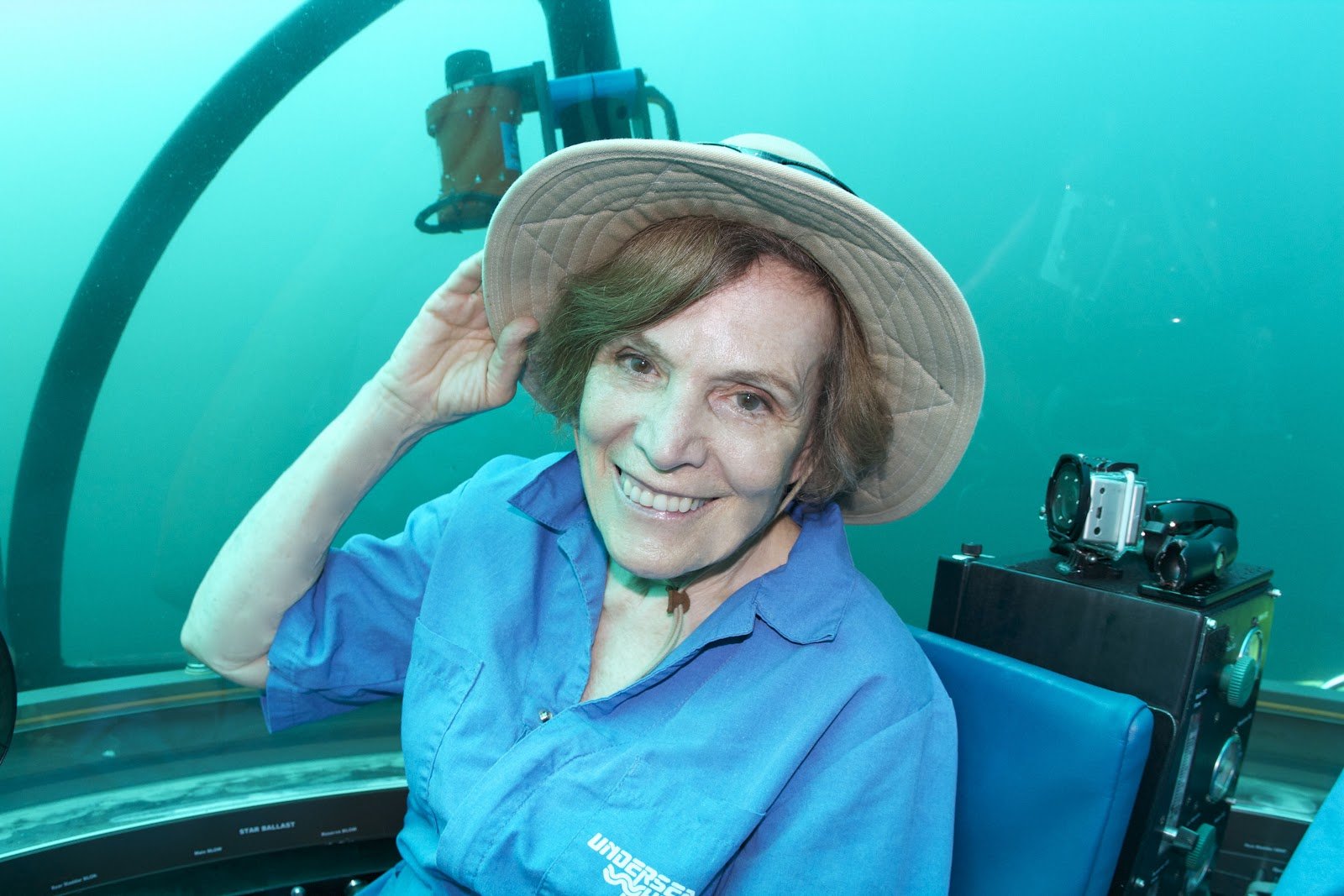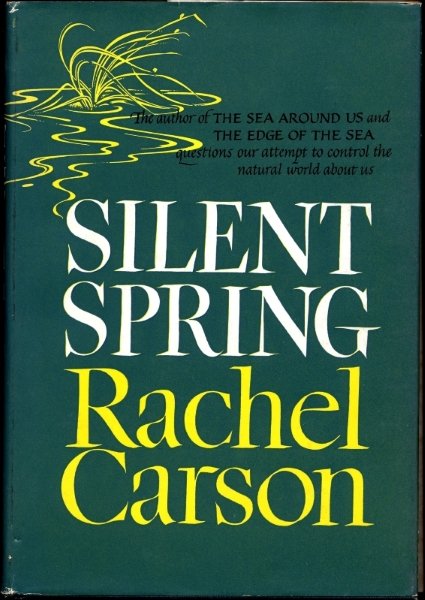The Women of Marine Sciences: Original Trailblazers
Happy Women’s History Month 2024!
The world of STEM is notoriously male-dominated, but in the past decade, more women have been breaking into the field than ever before. The number of women in STEM has increased 31% from 2011 to 2021, according to the National Science Foundation¹. With these numbers on the rise, it is important to acknowledge the woman who lit the way for all the others. In the field of Marine Science, women are credited with many breakthroughs during the 19th and 20th centuries. From conservationists to Oceanographers, women have left a major impact on the world of Marine science. Below are the stories and accomplishments of two of the leading trailblazers in the world of Marine conservation and biology.
Sylvia Earle
Sylvia Alice Earle, TIME’s first-ever “Hero for the Planet,” was born on August 30th, 1935, in New Jersey. She spent the first 12 years of her life growing up on a farm with her two siblings and parents, Lewis and Alice Richie. In 1947, Earle and her family moved to Dunedin, Florida; this is where she discovered the wildlife that inhabited the saltwater marshes and seagrass in her backyard. As a high-achieving student, Earle graduated high school at the age of 16 and went on to earn her Bachelor's degree in botany from Florida State University. Here, she also earned her diving license before attending Duke University to earn her PhD.
While completing her Ph.D., Earle departed on a National Science Foundation research vessel to the Indian Ocean, where she was the only woman invited on the voyage. The expedition was a success, and Earle proceeded to join voyages to the Galápagos Islands, the Chilean coast, and the Panama Canal Zone. These voyages were extremely demanding and entailed rigorous work, but Earle flourished under these conditions and continued to build her reputation in the field of Marine sciences. She discovered a new type of algae, pink in color, during an expedition to Chile in 1969 and was given the honor of naming the plant species; she chose to call it Hummbrella Hydra. During her expeditions in 1965, Earle was offered the role of resident director of the Cape Haze Marine Laboratory in Sarasota, Florida. She took on this position while simultaneously completing her PhD.
Her dissertation, “Phaeophyta of the Eastern Gulf of Mexico” (published in 1969), collected and documented over 20,000 species of algae. To collect her data, Earle used Scuba gear and observed the algae firsthand. She was not only one of the first women but one of the first scientists to ever do this.
Photograph by James A. Sugar, National Geographic
After earning her Ph.D. in Phycology, the study of algae (1966), Earle accepted positions as a research scholar at the Radcliffe Institute and a research fellow at the Farlow Herbarium of Harvard University. In 1970, Earle started some of her most well-known research with the Tektite II experiment. She led the first-ever team of entirely female divers to explore a habitat 50 feet below sea level in Great Lameshur Bay, St John, USVI. During Tektite II, Earle and her team tested the viability of the deep sea habitats and the health effects of living in underwater structures for long periods. The Female crew made waves in the scientific community, doing the same work as previous male crews. This was a huge step for women gaining respect in Marine Sciences and establishing a space in the community. Earle continued to dive, grossing more than 7,000 hours underwater and setting the world record for untethered diving depths in 1979.
Dr. Sylvia Earle and Tektite II all-female team in training.
Not only did Earle participate in fieldwork, but she also has published over 200 pieces of writing, including her famous book “The World is Blue: How Our Fate and the Oceans are One.” Many of her books advocate for protecting and conserving the ocean and marine life, making a passionate call for reform. Her organization, Mission Blue, is dedicated to preventing and healing marine habitat destruction and climate change’s effect on the ocean. Sylvia Earle proved that with enough passion, confidence in your abilities, and drive, you can carve your own spot into the history books and make a change in the world. Earle says it best:
“Hold up a mirror and ask yourself what you are capable of doing, and what you really care about. Then take the initiative - don't wait for someone else to ask you to act.” -Sylvia Earle
Rachel Carson
Born on a rural Pennsylvania farm in 1907, Rachel Carson was not always on the path to becoming a Marine Biologist or even a conservationist. Her childhood dream was always to become a writer. Carson became a published author at the age of 10; she wrote for a children’s magazine. In 1925, she began her studies as an English Major at Pennsylvania College for Women. While taking a Biology course taught by Mary Scott Skinker, Carson was inspired by the class and chose to switch her major to biology. Over a summer research program in Woods Hole, MA, Carson saw the ocean for the first time. This sparked a passion and source of inspiration in her that would soon be the core of her work. This newfound love for the science of nature did not hinder Carson's love for writing, though she once thought it did:
“I had given up writing forever, I thought. It never occurred to me that I was merely getting something to write about.”
After graduating with her master's degree from John Hopkins University in 1932, at the beginning of the great depression, she soon had to leave her Ph.D. studies and teaching job behind to get a job to better support her family. Carson went on to work for the U.S. Bureau of Fisheries in 1936. She was only the second woman ever hired by the Bureau. She acted primarily as a writer and Editor-in-Chief there until 1952. During her time at the Bureau, Carson wrote pamphlets and articles and ran a radio show called “Romance Under the Waters.” All of her projects allowed her to merge her exceptional writing talents with her thorough knowledge of Marine Biology.
Rachel Carson - Encyclopædia Britannica
Carson did her most important work outside the U.S. Bureau. She published her second book and international bestseller, The Sea Around Us, in 1951. The book is called a “Biography of the Sea” and discusses the history of the ocean and its possible future. The Sea Around Us won the 1952 National Book Award and the John Burroughs Medal, but more importantly, the book raised public awareness about the dangers of pollution to the ocean.
Thirty years after publishing The Sea Around Us, Carson came out with what many consider to be the most influential work of her career. Silent Spring was originally a three-part piece published in The New Yorker in 1962. After World War II, companies began to sell a chemical pesticide called Dichlorodiphenyltrichloroethane (DDT) to the general public for use in gardens. During her time working for the U.S. Beauru, Carson found that DDT hadn't been tested for civilian use, and it was killing more wildlife than just insects. She tried to write an article about this issue, but it was shut down. Almost 20 years after her article was denied, Carson warned of the dangerous nature of these pesticides contaminating waterways and the environment in Silent Spring. The book was considered a nationwide wake-up call and urged for government regulation of pesticides' effect on the environment.
For the rest of her life, Carson advocated for environmental protection and government legislation to regulate damage to wildlife and the environment. Chemical pesticide companies tried to discredit her research because they feared Carson’s work would negatively affect their profit and bring stricter regulation to their field. Carson never backed down though; she continued to advocate for the natural world, and in 1963 President John F. Kennedy endorsed her work in his Science Advisory Committee Report.
Before her death from breast cancer in 1964, Carson was awarded by both the National Audubon Society and the American Geographical Society for her work in Marine biology and writing, and after her death, she earned the Presidential Medal of Freedom (1980). Rachel Carson left a lasting legacy through her publications and advocacy. She was able to break the glass ceiling and forge her words into society, setting the bar for every conservationist to follow her.
References:
Aquarium, Monterey Bay. 1AD. “Women pioneers in deep ocean science.” Monterey Bay Aquarium, January 1, 1AD. https://www.montereybayaquarium.org/stories/women-pioneers-in-ocean-science.
“Biography: Rachel Carson.” n.d. National Women’s History Museum. https://www.womenshistory.org/education-resources/biographies/rachel-carson.
Deitz, Elizabeth Grieco, and Steven. n.d. “Diversity and STEM: Women, Minorities, and Persons With Disabilities 2023 | NSF - National Science Foundation.” https://ncses.nsf.gov/pubs/nsf23315/report/the-stem-workforce.
“Explorer Home.” n.d. https://explorers.nationalgeographic.org/directory/sylvia-alice-earle.
“How Rachel Carson Carved Out a Space to Become a Full-Time Writer.” 2022. Literary Hub. February 9, 2022. https://lithub.com/how-rachel-carson-carved-out-a-space-to-become-a-full-time-writer/.
“Oceanographer Sylvia Earle.” n.d. https://education.nationalgeographic.org/resource/real-world-geography-sylvia-earle/#.
“Rachel Carson (U.S. National Park Service).” n.d. https://www.nps.gov/people/rachel-carson.htm.
Rafferty, John P. 2024. “Sylvia Earle | Discoveries, Achievements, & Facts.” Encyclopedia Britannica. February 21, 2024. https://www.britannica.com/biography/Sylvia-Earle.
“Syliva Earle Biography.” n.d. Syliva Earle Biography. https://www.womenshistory.org/education-resources/biographies/sylvia-earle.
The Editors of Encyclopaedia Britannica. 2024. “Rachel Carson | Biography, Books, & Facts.” Encyclopedia Britannica. February 21, 2024. https://www.britannica.com/biography/Rachel-Carson.
“WoRMS - World Register of Marine Species - Hummbrella Hydra S.A.Earle, 1969.” n.d. https://www.marinespecies.org/aphia.php?p=taxdetails&id=373536.
Written by Lauren Costigan






